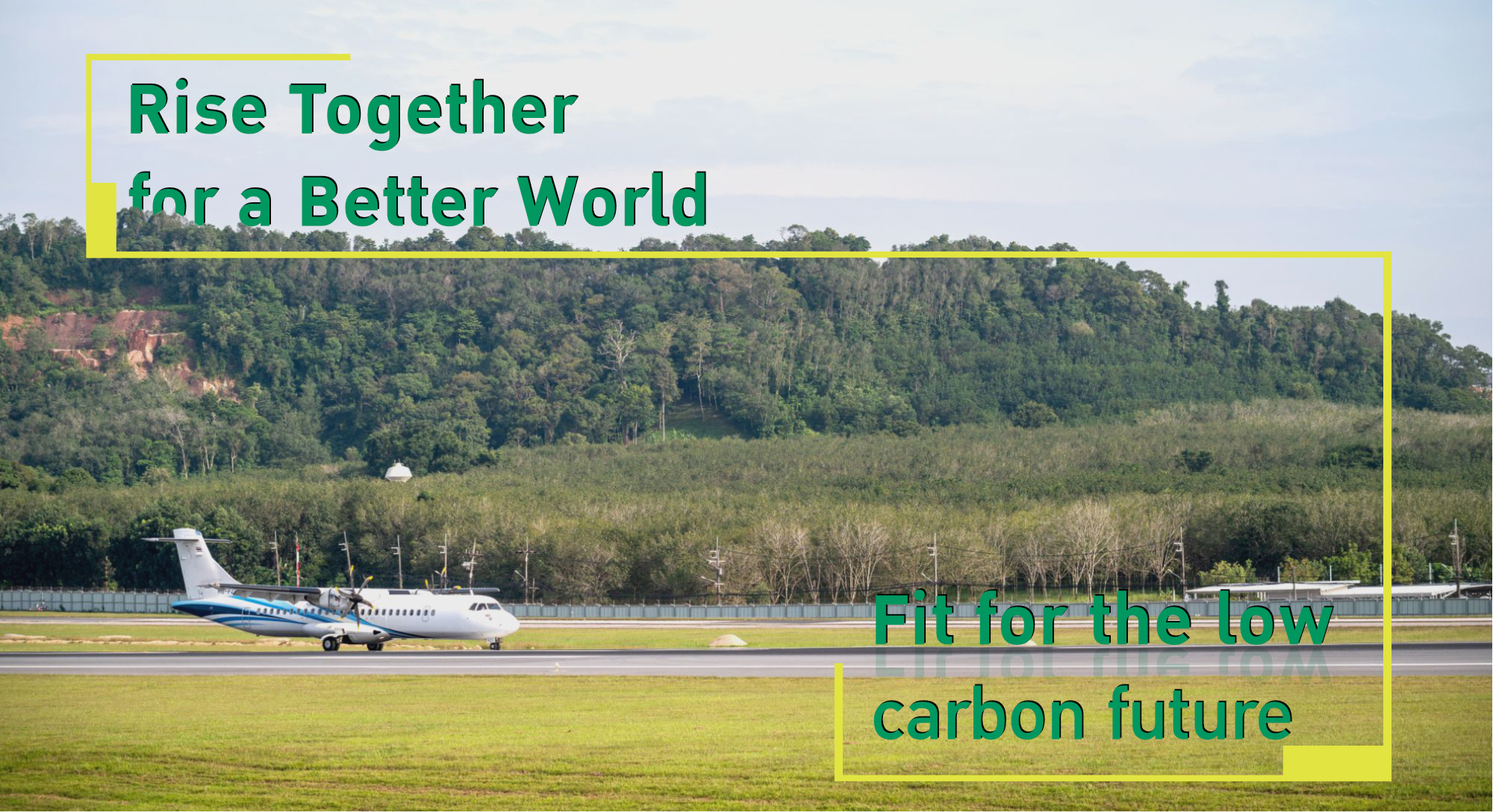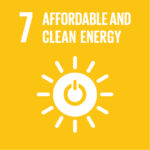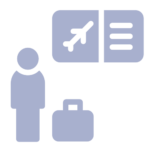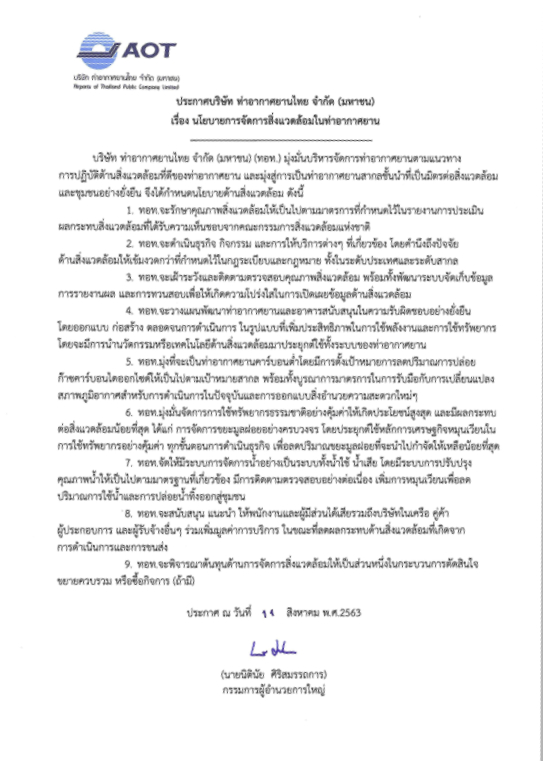
Environmental Management



Customers
Business Partners

Regulators
Shareholders, investors and securities analysis

Communities and Societies
Mass media and Online Media
The operation of the airport may affect the environment, whether due to energy consumption, water consumption, greenhouse gas emissions, waste and wastewater, and noise impacts. Therefore, sustainable environmental management is a fundamental issue that is very important in reducing impacts on the environment and stakeholders in the community and society by complying with the legal requirements set by the regulators and promoting business partners to have good environmental management. In addition, environmental management is meeting the expectations of customers who are increasingly consuming environmentally fri end products and services, as well as helping to reduce the impact on the world and promoting human rights regarding the rights to life and health of the surrounding communities through good environmental practices.
Policy
Airport Environmental Management Policy
AOT has developed an environmental policy for the Head Office and all 6 airports in responsibility as well as related sectors, aiming to operate in the same direction and comply with the requirements of the laws.
See more details

Important Environmental Management Guidelines for Airports
At present, follows its 6 important operational guidelines which are noise management, air quality management, water, and wastewater management, solid waste management, energy and climate change management, and environmental sanitation. Details are as follows:
AOT has deployed the Noise Balanced Approaches of International Civil Aviation Organization (ICAO) for the operations of AOT’s airports. The principles of Balanced Approaches are as follows:
1.
Reduction of Noise at source
Encourage airlines to use aircraft of low noise level while applying optimum take-off weight.
2.
Land-use Planning and Management
Support the land-use planning department with the relevant information, such as airport development plans and the noise impact areas, for an appropriate land use determination.
3.
Noise abatement operational procedures
Require airlines to apply noise abatement procedures for landing and take-off where safety allows. Other factors under consideration include runway capacity, preferential runway use, air traffic management efficiency and accessibility.
4.
Operating restrictions
Announce the restrictions in Aeronautical Information Circular (AIC) for aircraft operating their flights at Suvarnabhumi Airport, Don Mueang International Airport and Chiang Mai International Airport not generate aircraft noise level exceeding those stipulated in Chapter 3 of Annex 16 of Chicago Convention.
Moreover, aircraft noise is regularly monitored through permanent and mobile aircraft noise monitoring stations, as follows:
Permanent aircraft noise monitoring stations
- Suvarnabhumi Airport currently has 19 permanent stations and 2 mobile stations. Preparation work is under progress for the installation of 6 additional stations during the construction of Runway 3 and 5 additional stations during the construction of Runway 4.
- Phuket International Airport has 4 permanent stations and 2 mobile stations.
- Chiang Mai International Airport has 4 permanent stations and 2 mobile stations
Mobile aircraft noise monitoring stations
- Don Mueang International Airport
- Mae Fah Luang - Chiang Rai International Airport
measure aircraft noise level for 7 consecutive days for twice a year.
AOT has implemented mitigation measures for air quality all along, which cover air pollution sources on the ground and in the air. Thailand has faced the problem of PM2.5 exceeding the standard. Therefore, AOT has put in place additional mitigation measures for PM2.5. The air pollution mitigation measures for air quality include:
- Require the aircraft to stop the engine and control the use of Auxiliary Power Unit (APU) when parking at the pit or passenger loading bridge, and use the ground power unit and PC air provided by the airport instead.
- Manage ground traffic flow within the airports, especially around terminal buildings, and parking space, to avoid congestion which helps reducing air pollution.
- Enforce regular maintenance of vehicles and Ground Support Equipment (GSE) to prevent air pollution.
- Encourage the use of environmentally- friendly vehicles such as electric vehicles
- Encourage employees and airport users to commute by public transports to reduce energy consumption and pollution from cars.
- Initiate campaigns to avoid or reduce forest burning, for AOT’s airports located in the risk areas of forest fire.
AOT established air quality monitoring for monitor, inspection, and surveillance of air quality within the airports and their proximity areas as follows:
- General Atmospheric Air Quality Monitoring Station (temporary station) at Suvarnabhumi Airport, Don Mueang International Airport, Phuket International Airport, Chiang Mai International Airport and Mae Fah Luang - Chiang Rai International Airport, conducted measurements twice a year for 7 consecutive days. The measured indexes were
- Nitrogen oxide (NOx)
- Carbon monoxide (CO)
- Total Hydrocarbons (THC)
- Total suspended particles (TSP)
- Particulate matter 10 micrometers (PM10)
- Volatile organic compounds (VOCs)
- wind direction and speed
The measurement results showed that the air quality was within the standard as required by law to monitor air pollution levels that may affect public health.
- Suvarnabhumi Airport will install 2 permanent air quality monitoring stations during the construction of Runway 3.
- Don Mueang International Airport will install 2 permanent air quality monitoring stations during the construction of Don Mueang Airport Development Project Phase 3.
AOT manages water and wastewater in order to have sufficient quantities for operating consumption and to prevent as well as controlling problems that may occur to the ecosystem and surrounding communities. At present, the main water sourced by AOT in the airport is from the Metropolitan Waterworks Authority, Provincial Waterworks Authority, and from the airport's water quality improvement system which relies on raw water sources from groundwater and surface water. Each airport has a water quality control process that is produced by itself to meet the water standards for consumption as prescribed by the World Health Organization (WHO) and monitors the quality of tap water inside the passenger terminals to meet the standards according to the notification of the Ministry of Public Health on a monthly basis.
In addition, the airports under AOT's responsibility are equipped with a centralized wastewater treatment system that can adequately handle the daily wastewater volume. There is a control and inspection of the operation of the wastewater treatment system to make it work effectively, and check the quality of the effluent to meet the legal standards for Suvarnabhumi Airport and Phuket International Airport. Wastewater that has passed through the centralized wastewater treatment system is further treated for reuse.
As for Suvarnabhumi Airport which is AOT's main airport, water management is carried out by companies that have been certified with international environmental management standards ISO 14001:2015 for the management of water supply systems, airport drainage system, wastewater collection system, and wastewater treatment system.
In this regard, AOT is collecting the base case data to set water use goals. The goal refers to the current water use situation of AOT together with the water management context in each area of the airport, including local water management measures of the relevant government sector.
Currently, the waste problem is one of the national problems in terms of the lack of disposal areas, greenhouse gas emissions from landfills and the contamination of waste, especially plastic waste, into the ecosystem. AOT is aware of the aforementioned problems and therefore has always been managing them.
Waste Disposal
An airport is a place of high traffic with many passengers. It is inevitable for the airport to accommodate all different types of waste coming from many consumptions and other activities being carried out within the airport as well as waste from the aircraft. With this in mind , AOT has established and developed a waste management system to encourage passengers and airport staff to help reduce waste levels and haveall wastes sorted at the passenger terminal as well as in the office buildings. Containers are set up within the airport passenger terminal and of fice facilities to support the campaign for sorting general and recyclable wastes, whereas hazardous and infectious wastes are stored and managed separately. Then the wastes will be hygienically collected and disposed of in accordance with the law and common sanitation principles. Sanitary waste breakthrough s have been set up to Separate general and recyclable wastes for local or private agencies to transfer and dispose of by ensuring cleanliness of the areas and paths that the garbage trucks pass through after each collection. Hazardous waste from maintenance of various equipment such as oil,solvents, light bulbs , and Other infectious waste from airport medical clinics will be disposed of by legally licensed companies.
See more details
The Use of Renewable Resources
In 2021, AOT has established a policy for managing the selection of AOT’s environmentally-friendly information technology in order to seriously support the concept of the circular economy by focusing on the purchase of electronic equipment that has a long service life and can be reused or easily recycled. This way is to reduce the generation of waste from the beginning. The policy also convert working methods of AOT employees from a resource-intensive analog system that uses paper into a digital system that can help reduce waste even more, such as an e-Document system and also support the use of information technology resources with greater efficiency to reduce energy consumption, such as Virtualization Server and Cloud Computing. In addition, AOT has established guidelines for the implementation of the Green ICT Management Guideline for employees to practically use through the aforementioned approach consisting of 4 key components, as follows:
- Equipment Lifecycle
- End User Computing
- Enterprise Computing
- Using ICT to reduce greenhouse gas emissions (ICT as a Low – Carbon Enabler)
Greenhouse gas management is one of the Standard Business Practices that many world-class companies follow. It is an indicator reflecting corporate social and environmental responsibility. Investors express interest in companies that disclose data on greenhouse gas emissions as climate change may affect the sustainability of the business. All of 6 AOT airports have participated in Airport Carbon Accreditation Programme (ACA) of Airports Council International (ACI) in order to express intent to take responsibility for the climate change problems. Carbon emission, in the form of carbon equivalent (CO2 e), has been calculated from the sources within airports’ operational boundary following Airport Carbon Accreditation Guidance. This has led to carbon reduction and carbon management measures.
ACA consists of 6 levels including Level 1 Mapping, Level 2 Reduction, Level 3 Optimisation, Level 3+ Neutrality, Level 4 Transformation and Level 4+ Transition. In order to progress on the levels, airports have to keep improving the efficiency of greenhouse gas management. Suvarnabhumi Airport, Don Mueang International Airport, Chiang Mai International Airport, Mae Fah Luang - Chiang Rai International Airport and Hat Yai International Airport are currently accredited with Level 3 Optimisation. Phuket International Airport is currently accredited with Level 1 Mapping.
Solar Power Generating System Installation Project

AOT and District Cooling System and Power Plant Co., Ltd. (DCAP) have jointly signed an agreement granting permission to operate and install a solar power generating system on the roof of the passenger terminal at Suvarnabhumi Airport with a size of 4.4 megawatts in order to generate electricity that is eco-friendly without greenhousegas emissions and also provide shade that reduces heat inside the building. This results in effective reduction of electric power usage and cool water in the air conditioning system. In addition, AOT receives revenue share from the sales of electricity generated from the project. At the end of the scale year 2022, it can generate electricity at 286.28 megawatt-hour or 0.07% of the total electricity consumption. AOT plans to increase power generation in the future as well.
AOT is committed to operating airports with responsibility to the environment and sanitation management to facilitate travel and to prevent unnecessary delays of aircraft, crew, passengers, and cargo. AOT has implemented the environmental monitoring and environmental management to prev ent hazards that might affect airport users.
Sanitary Monitoring
AOT uses Integrated Pest Management (IPM) to control, prevent and eliminate pests and disease vectors. The method integrates physical and biological techniques, which are selected over the utilization of chemicals, to prevent environmental impacts. Besides, AOT carries out building sanitation monitoring, water sanitation monitoring and food sanitation test. Water sanitation monitoring is done by analyzing samples of drinking water and water supply. Food sanitation tests for restaurants in passenger terminal buildings include physical, microbiological, and chemical tests.
Environmental Quality Monitoring at Suvarnabhumi Airport
- Indoor air quality is monitored in various buildings at Suvarnabhumi Airports including Airport Operation Building (AOB), Airport Information Management System Building (AIMS), Passenger Terminal and Sorting Area. Parameters monitored include Carbon Monoxide (CO), Carbon Dioxide (CO2), Volatile Organic Compounds (VOCs), Temperature, Relative Humidity, Microorganisms and Fungi in the air. Moreover, Particulate Matter 10 micrometers (PM10) and Particulate Matter 2.5 micrometers (PM25) are monitored around the traffic control tower, Airport Rescue & Fire Station, and Sorting Area.
- Suvarnabhumi Airport has also monitored wastewater from stakeholders’ activities to prevent health impacts on people in nearby communities. Moreover, surface water quality in the canal within Suvarnabhumi Airport is monitored regularly.
Complaint and Suggestion Channels
AOT provides channels for receiving complaints on environmental issues covering noise and other impact issues to jointly support the sustainable solutions and establish a coordinating center for solving environmental impact problems at Suvarnabhumi Airport. There are 2 main missions, as follows:

Public relations
visiting the areas to meet and clarify with people on various issues related to the operations and resolving the impacts of AOT, as well as monitoring the situation within the community and surrounding areas of the airport to report issues, opinions, or complaints of the public to AOT.

Receiving complaints by phone calls (Call Center)
receiving complaints, and answering inquiries regarding procedures for compensation for noise impacts from Suvarnabhumi Airport operations, work plan procedures, results of work to solve problems and provide other relevant information in case of inquiries for in-depth information from AOT. The Coordination Center will be the data coordinator to clarify and create understanding for the inquirers.
Suvarnabhumi Airport
Environmental Impact Mitigation Center at Suvarnabhumi Airport
Tel. 0-2132-9088 and 0-2133-1888, Fax 0-2133-1889 from 8:00 AM - 17:00 PM.
Every day except public holidays.
Contact
Complaints and suggestions for other airports,
Please contact AOT Contact Center 1722 or www.airportthai.co.th in the section "Contact and Receive Complaints".
Last Updated: August, 26 2023

